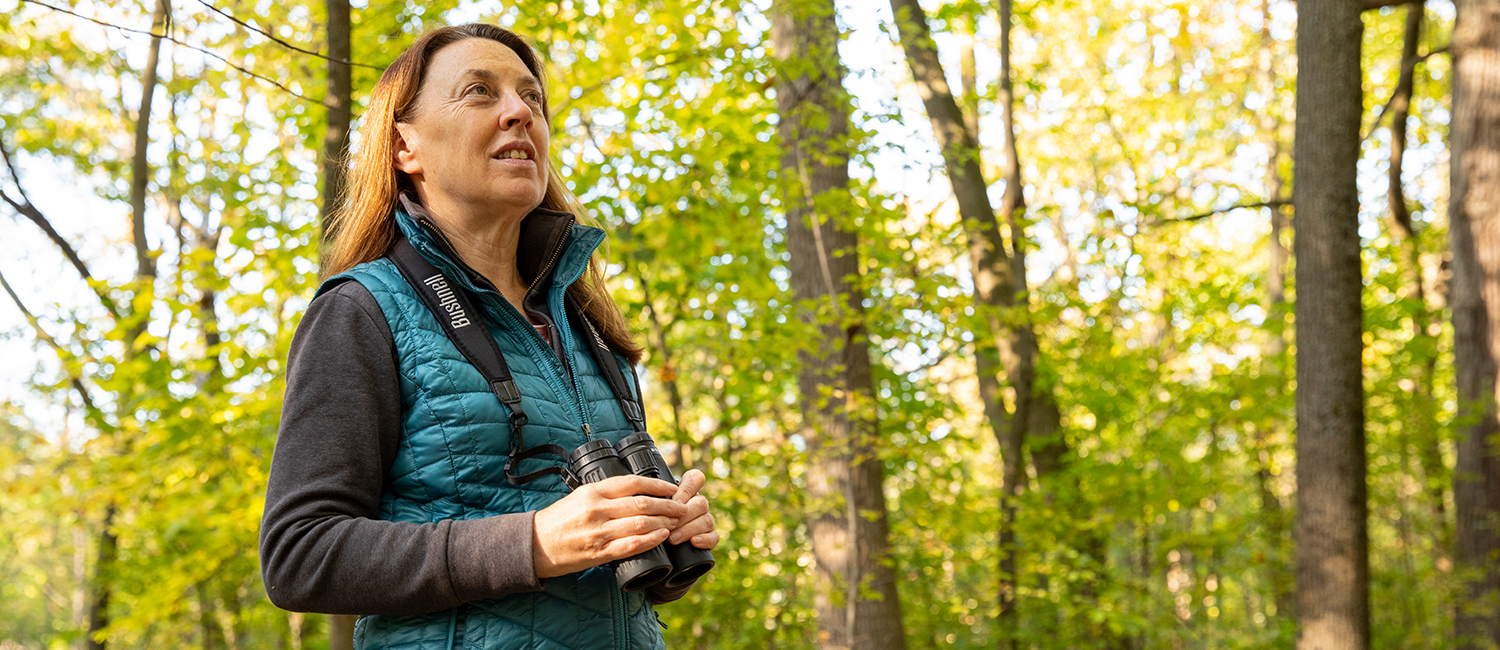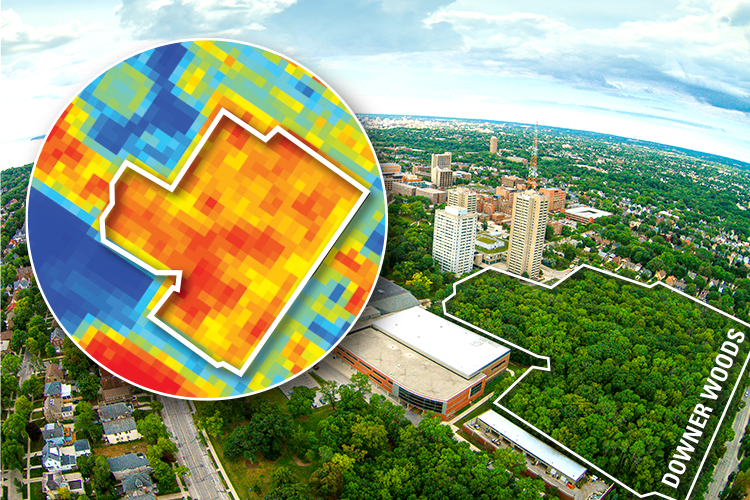
Calibrating a satellite while it watches Earth’s gardens grow
Every two days, a small satellite circling high above the Earth focuses on UWM’s Downer Woods.
It’s part of a project called VENµS – short for Vegetation and Environment monitoring on a New MicroSatellite – and it’s capturing images of more than 50 of the world’s green spaces, from the 11.1 wooded acres on UWM’s main campus to vast Amazon rainforests.
VENµS detects green vegetation and tracks the start and end of the growing seasons in various habitats. UWM and Alison Donnelly, an associate professor of geography, play an important role in its global work.
Downer Woods is a perfect test bed for assessing the accuracy of the satellite, which was launched by the space agencies of Israel and France. Downer Woods’ compact area allows for direct visual observation of buds and leaves, which are compared to the satellite’s data to validate its phenology sensors that monitor seasonal changes.

Every second day in the spring and autumn, Donnelly sets out on foot through Downer Woods, noting when shrubs and trees sprout buds and leaves. She calculates an average of the ground observation data to determine a “greening” number – a percentage of foliage that she can compare to the satellite’s averages.
“We’re studying an urban fragment influenced by human activity and the city itself,” Donnelly explains. “It might seem like mindless monitoring, but it’s really important.”
Maintaining a precise calibration of the satellite’s sensors is crucial to understanding the nuances in ecosystems like the Amazon and analyzing the factors affecting them.
The work done by Donnelly’s research team also has interest beyond the VENµS project, providing surprising information about invasive plant species.
“We always thought that the invasives would start to leaf out earlier and that would give them a competitive advantage,” Donnelly says. “That’s not what’s happening. The invasives are leafing out a little bit later so they don’t risk damage from late frost. But unequivocally, the invasive species, once they start to leaf out, go much quicker.”